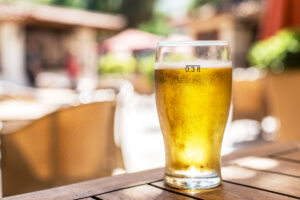Background and research aim
Little is known about the relative contribution of marketing exposure to alcohol consumption as compared to other factors. For prevention purposes, a comparison between marketing on the one hand and interpersonal and environmental factors that can be changed by policy, education, child rearing on the other hand, is useful. If we want to prevent, stall or reduce underage drinking, should we focus on marketing, or better focus on other factors, such as accessibility and availability of alcohol, parental rules about alcohol use, and parental and peer alcohol use, or both? Also, alcohol use differs between subgroups; prevention may need to target and tailor its efforts to specific subgroups based on, for example, demographics and personality. Finally, not all adolescents will be equally susceptible to alcohol marketing. Indeed, it has been acknowledged that future research should study personal characteristics that predict differential responses to marketing.
The current research aims to study the relationship between marketing exposure and alcohol use in youth, as well as factors influencing this relationship. Also, we aim to put the effect of marketing into perspective by studying the effect that other modifiable factors have on alcohol use in youth.
Methods
A longitudinal, 3 wave, cohort study among 1300 adolescents at baseline. Baseline measurement (T0) is in the second school year of secondary school (typical ages 13-14), T1 is 12 months later (ages 14-15) and T2 another 12 months later (ages 15-16). The study uses a school-based survey to assess marketing exposure, alcohol use and interpersonal and environmental factors. We use tablets and survey software from Qualtrics.
Financing
IARD
Term
February 2014 – February 2018
Research team
Gert-Jan Meerkerk, PhD (senior researcher)
Barbara van Straaten, PhD (project leader)

